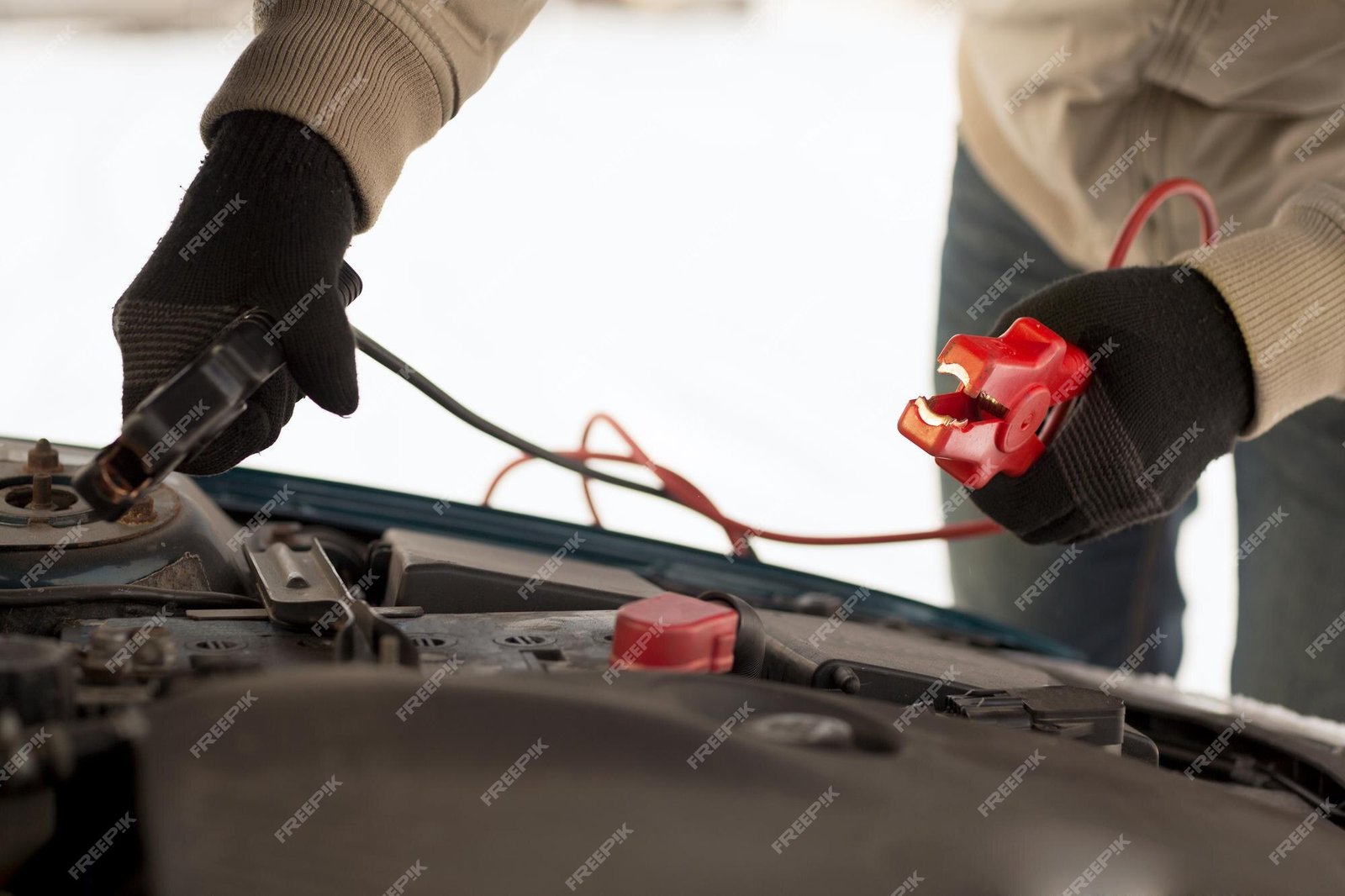The Top Mistakes to Avoid When Jumpstarting a Vehicle
Jumpstarting a vehicle can be a lifesaver when your battery dies unexpectedly. Whether you’re in a parking lot, at home, or on the side of the road, knowing how to jumpstart a car can get you back on your way in no time. However, many people make critical mistakes during the jumpstarting process that can lead to further complications, damage to the vehicles involved, or even personal injury. In this article, we’ll explore the top mistakes to avoid when jumpstarting a vehicle, ensuring you have a smooth and safe experience.
1. Using the Wrong Jumper Cables
One of the most common mistakes when jumpstarting a vehicle is using the wrong type of jumper cables. There are different types of cables available, including light-duty and heavy-duty cables. Light-duty cables may not be sufficient for larger vehicles or those with dead batteries. Always choose cables that are rated for the appropriate current and gauge, ideally 4-gauge or lower, to ensure efficient power transfer.
2. Neglecting to Read the Owner’s Manual
Many car owners overlook the importance of consulting the owner’s manual before jumpstarting a vehicle. Each vehicle has specific instructions regarding jumpstarting, including where to connect the cables and any specific safety precautions to follow. Failing to read the manual can lead to improper connections, potentially damaging the vehicle’s electrical system.
3. Not Checking Battery Condition
Before jumpstarting, it’s essential to assess the condition of the battery. If the battery is leaking or has visible corrosion, attempting to jumpstart the vehicle could be dangerous. In such cases, it’s best to replace the battery or seek professional help rather than risking an explosion or further damage.
4. Connecting the Cables Incorrectly
Incorrectly connecting the jumper cables is a prevalent mistake that can cause significant issues. The proper order for connecting jumper cables is crucial:
- Red Cable: Connect the red (positive) cable to the positive terminal of the dead battery first.
- Red Cable: Connect the other end of the red cable to the positive terminal of the good battery.
- Black Cable: Connect the black (negative) cable to the negative terminal of the good battery.
- Black Cable: Connect the other end of the black cable to an unpainted metal surface on the dead vehicle, away from the battery.
Avoid connecting the black cable directly to the dead battery to minimize the risk of sparks and potential explosions.
5. Jumpstarting with a Weak Battery
Another common mistake is attempting to jumpstart a vehicle with a weak or insufficiently charged battery. If the donor vehicle’s battery does not have enough power, it may fail to jumpstart the dead vehicle effectively. Always ensure the donor battery is fully charged and capable of providing the necessary voltage.
6. Starting the Donor Vehicle Too Soon
After connecting the cables, some people make the mistake of starting the donor vehicle immediately. It’s crucial to let the dead battery charge for a few minutes before attempting to start the vehicle. This allows enough time for the dead battery to receive a boost and increases the chances of a successful start.
7. Not Running the Engine Long Enough
Once the dead vehicle starts, it’s important to let it run for a sufficient amount of time. Many people make the mistake of turning off the engine shortly after it starts. Allow the vehicle to run for at least 15 to 30 minutes to ensure the battery gets adequately charged. This helps prevent the battery from dying again shortly after being jumpstarted.
8. Ignoring Safety Precautions
Jumpstarting a vehicle involves handling electrical components, so safety precautions should always be a priority. Some common safety mistakes include:
- Not Wearing Safety Gear: While not always necessary, wearing safety glasses and gloves can protect you from potential battery acid splashes or sparks.
- Avoiding Open Flames: Ensure there are no open flames or sources of ignition nearby when jumpstarting, as batteries can emit explosive gases.
- Maintaining Distance: Keep a safe distance from the battery while starting the engine, as a malfunctioning battery can explode.
9. Jumpstarting a Vehicle with Electronic Components
Modern vehicles are equipped with complex electronic systems that can be sensitive to voltage spikes. Jumpstarting a vehicle with advanced electronics may cause damage to the vehicle’s computer system. In such cases, it’s advisable to use a jump starter instead of relying on another vehicle.
10. Not Removing Cables in the Correct Order
After successfully jumpstarting the vehicle, it’s essential to remove the jumper cables in the correct order to prevent any electrical issues:
- Remove the black cable from the unpainted metal surface of the dead vehicle.
- Remove the black cable from the negative terminal of the donor vehicle.
- Remove the red cable from the positive terminal of the donor vehicle.
- Finally, remove the red cable from the positive terminal of the dead battery.
Failing to remove the cables in this order can cause sparks and may lead to an electrical short.
11. Assuming a Jumpstart Will Fix the Problem
Many people mistakenly believe that a jumpstart will solve all battery-related issues. However, if the battery repeatedly dies, it may indicate a more significant problem, such as a failing alternator or a battery that is nearing the end of its lifespan. If the vehicle continues to have battery issues, it’s essential to have it inspected by a professional mechanic.
12. Forgetting to Secure the Vehicles
When jumpstarting, it’s vital to ensure that both vehicles are securely parked. Some people make the mistake of jumpstarting without putting the vehicles in park or neutral. This oversight can lead to accidents or injuries. Always engage the parking brake and ensure the vehicles are stable before starting the jumpstart process.
13. Using a Damaged or Inadequate Jumper Cable
Not all jumper cables are created equal. Using damaged or inadequate jumper cables can result in poor connections and may prevent the jumpstart from being successful. Always check the cables for fraying, corrosion, or any other signs of wear before using them. Investing in a good quality set of jumper cables can save you from frustration in the long run.
14. Rushing the Process
Jumpstarting a vehicle requires patience and attention to detail. Many people make the mistake of rushing through the process, which can lead to accidents or errors. Take your time, follow the correct steps, and ensure that all connections are secure before attempting to start either vehicle.
15. Neglecting to Seek Help if Unsure
If you’re unsure about how to jumpstart a vehicle or feel uncomfortable performing the task, don’t hesitate to seek help. Whether it’s from a friend, family member, or roadside assistance service, getting assistance can prevent mistakes and ensure a safe jumpstarting experience.
Conclusion
Jumpstarting a vehicle can be straightforward if you take the necessary precautions and avoid common mistakes. By using the right equipment, following proper procedures, and prioritizing safety, you can successfully jumpstart your vehicle and get back on the road. Remember, if you’re ever in doubt or uncomfortable with the process, don’t hesitate to ask for help. Staying informed and prepared is key to handling any vehicle-related emergencies.





